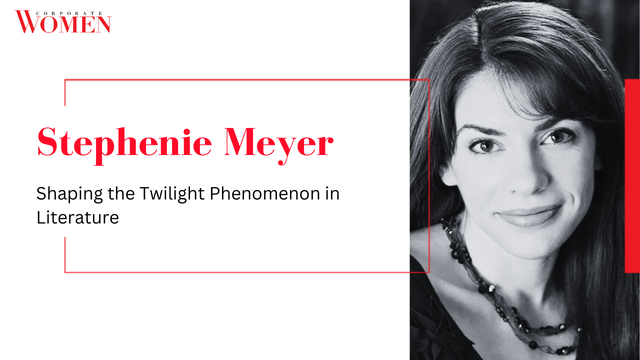Amplify Your Leadership Voice Worldwide
Join 7,000+ industry leaders sharing insights with millions of professionals globally
Join 7,000+ industry leaders sharing insights with millions of professionals globally

The name Stephenie Meyer has become synonymous with the vampire and werewolf romance genre, thanks to her literary phenomenon, the Twilight Saga. Born on December 24, 1973, in Hartford, Connecticut, Meyer has risen to fame as an American author, captivating audiences well beyond the pages of her books. This article delves into Stephenie Meyer’s life, her journey to becoming a renowned author, and the profound impact of her work on the literary world.
Growing up in a large family with five siblings, Meyer’s formative years were shaped by her father’s role as a financial officer and her mother’s dedication to homemaking. Her educational journey led her to Chaparral High School in Scottsdale, Arizona, and later to Brigham Young University (BYU), where she graduated with a bachelor’s degree in English in 1997.
Meyer’s love for reading and storytelling blossomed during her early years, prompting her to write extensively while balancing the responsibilities of motherhood and homemaking. This passion eventually paved the way for her debut novel, “Twilight.”
Meyer’s breakthrough as an author came with the release of “Twilight” in 2005. The novel introduced readers to the captivating world of Bella Swan and her forbidden love with the vampire Edward Cullen. This unique blend of romance, supernatural elements, and the complexities of forbidden love resonated across age groups, making the Twilight Saga a global sensation.
The subsequent novels in the series, including “New Moon” (2006), “Eclipse” (2007), and “Breaking Dawn” (2008), further explored the relationships between humans, vampires, and werewolves. The Twilight Saga’s popularity extended beyond books, with a film adaptation starring Kristen Stewart and Robert Pattinson amplifying its cultural impact and inspiring a dedicated fan base.
Despite its immense popularity, the Twilight Saga faced criticism for its writing style, character development, and the portrayal of an allegedly unhealthy relationship dynamic. Some argued that the dependence of the protagonist, Bella, on Edward raised concerns. Nevertheless, the series sold over 100 million copies globally, translated into numerous languages, attesting to its undeniable cultural significance.
Post-Twilight, Meyer diversified her writing projects. “The Host” (2008), a science fiction novel exploring themes of love and survival, received acclaim and was adapted into a feature film. Meyer returned to the Twilight universe with “Midnight Sun,” offering Edward’s perspective on the events of the first novel. “The Chemist” (2016), a departure from her previous work, presented a gripping thriller narrative.
Stephenie Meyer’s influence on young adult literature is profound. The Twilight Saga played a pivotal role in popularising the paranormal romance subgenre, inspiring a wave of similar books and series featuring supernatural creatures. Her work contributed to the cultural phenomenon of young adult literature, transcending generational boundaries and sparking discussions on love, relationships, and the convergence of the supernatural with everyday life.
Stephenie Meyer’s journey from a BYU graduate to a global literary sensation underscores the lasting impact of her work. The Twilight Saga, with its passionate romance and supernatural intrigue, has left an enduring mark on young adult literature and popular culture. Despite controversies, Meyer’s novels continue to find a dedicated audience, securing her position as a prominent author of the 21st century. Her ability to craft captivating stories resonates with readers, making Stephenie Meyer an indelible figure in literary history.
Join industry leaders who have shared their insights with millions of professionals globally.
Copyright © 2025 The Corporate Women. All Rights Reserved.